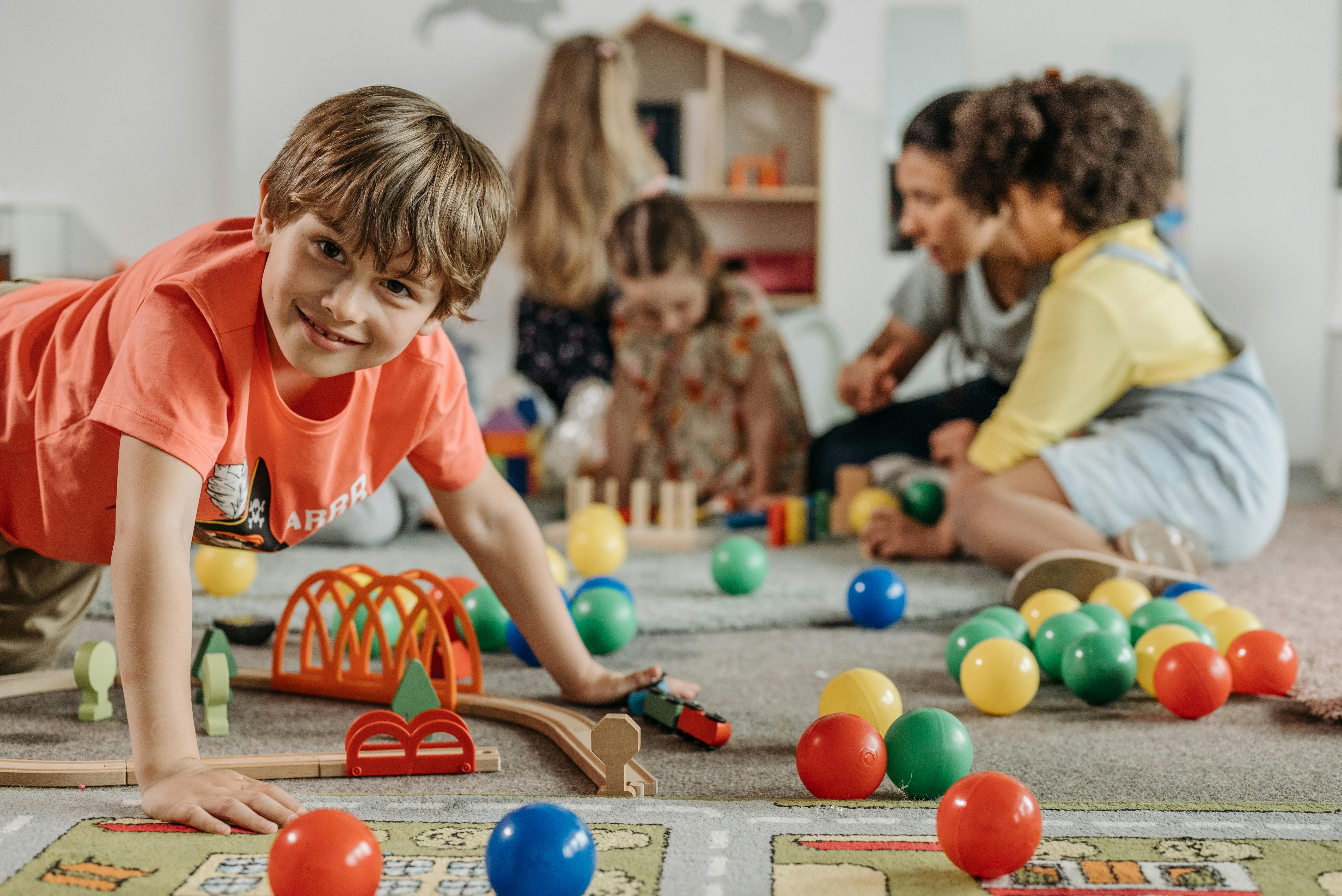
Photo by Pavel Danilyuk: https://www.pexels.com/photo/boy-in-orange-shirt-playing-on-the-floor-8422207/
When you’re deep in the trenches of toddler toys and teen drama, it’s easy to think of your house as something you survive rather than something you design. But what if your home could grow with your kids without forcing you to give up your own comfort, style, or sanity in the process?
That’s the magic of adaptable design. It’s about creating spaces that support your kids through every phase, from fort-building to finals in a week. All without the need for a total remodel every two years. And just as importantly, it’s about designing in a way that still serves you.
Because let’s face it, a home built entirely around Play-Doh tables and bean bags won’t feel like much of a haven when the kids eventually fly the nest.
When you first set up a nursery, the thought of needing a teen hangout zone someday feels absurdly far away. But blink. Suddenly, your baby wants a drum kit and a door that locks.
That’s why future-proofing is so key. Instead of designing for a single life stage, think ahead. Convertible cribs that become beds, modular couches, and open-concept spaces that can morph from playrooms to homework hubs. These are the decisions that save you money, time, and unnecessary chaos later on.
Even built-ins can be flexible. Shelves designed low for kids’ books can eventually hold vinyl records or travel keepsakes. The goal is to create a framework that evolves with your family, not one you constantly have to tear down and rebuild.
In a child's bedroom, a classic example of future-proof design is the use of bunk beds. These versatile pieces of furniture are not just a solution for saving space in shared rooms; many modern designs can be separated into two single beds as the children grow older. This adaptability allows the furniture to remain a functional part of the room for many years, eliminating the need for a costly replacement.
One of the most powerful gifts you can give a child is a space that feels like their own. But that doesn’t mean surrendering your entire home to rainbow plastic and mismatched furniture.
Designing independence can look like a cozy window seat that doubles as a reading nook, or a corner in the living room stocked with art supplies. Low storage cubbies are also great for kids to learn how to put things away by themselves.
These areas offer both autonomy and boundaries, allowing your kids to feel ownership over a space without spreading their things throughout the entire house. Plus, kid-friendly doesn’t have to mean kid-themed. Thoughtful design can keep things looking polished as well as playful.
Kids need places to bounce, build, flop, and daydream. You need to keep your house from looking like a tornado of stuffed animals just swept through. Start with labeled bins or under-bed drawers. When kids have options for storage, they’re more likely to use them. Another idea that’s easy on the eye is a storage bench that allows you to hide toys inside.
Multi-use furniture is all the rage these days, and for good reason. Fold-out desks that double as an arts and crafts station, or modular mats that look like chic rugs when not in use. These subtle switches keep your home feeling cohesive while still meeting your kids’ needs.
You can get even more creative by using your home’s vertical space as a secret weapon. Loft netting, for example, is the ideal way to incorporate a reading nook or versatile play area into your home. Today it’s a stargazing nest, tomorrow a chill spot for your teenager.
According to Sunrise Yacht Products, loft nets are perfectly suited to open-concept homes that want functionality without taking up valuable floor space. And in the case of a fun kids’ play area, you’ll contain the mess out of sight.
Let’s be real: most childproofing gear is not going to win any design awards. But with the right materials and intelligent layout, you can build in safety without compromising style. Consider rounded furniture edges with a modern finish, or low-VOC, wipeable paints in muted tones.
Natural materials like wood, jute, and cotton wear well and look modern, while strategic lighting balances the ambiance and pulls it all together. Add in acoustic panels or rugs for sound dampening, and you’ve got a space that protects your peace as well as theirs.
And finally, sliding pocket doors are a game-changer. They disappear into the wall when open, giving kids room to roam and your home a fresh, spacious feel. Close them, and you’ve divided your rooms. Now there’s a quiet space for homework, relaxing, or that glass of wine.
Designing a home that grows with your kids isn’t about perfection—it’s about planning. When you choose pieces and layouts that evolve with life stages, your home becomes a true partner in parenting. And best of all? When the bikes get put away and the bedrooms go quiet, your space will feel like it’s ready for your next chapter, too.